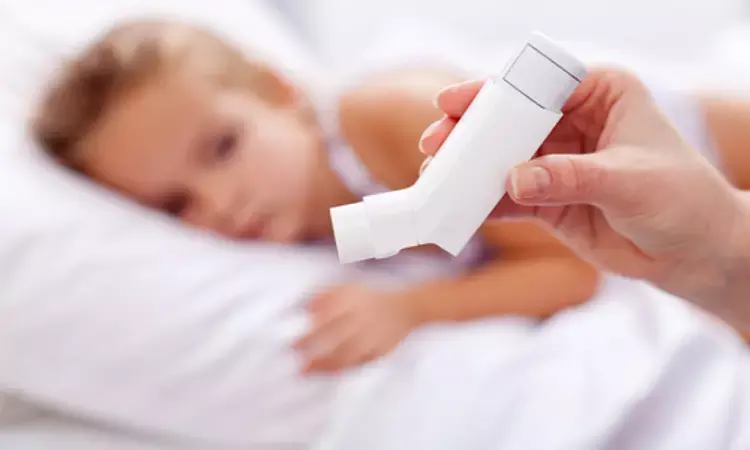- Home
- Medical news & Guidelines
- Anesthesiology
- Cardiology and CTVS
- Critical Care
- Dentistry
- Dermatology
- Diabetes and Endocrinology
- ENT
- Gastroenterology
- Medicine
- Nephrology
- Neurology
- Obstretics-Gynaecology
- Oncology
- Ophthalmology
- Orthopaedics
- Pediatrics-Neonatology
- Psychiatry
- Pulmonology
- Radiology
- Surgery
- Urology
- Laboratory Medicine
- Diet
- Nursing
- Paramedical
- Physiotherapy
- Health news
- Fact Check
- Bone Health Fact Check
- Brain Health Fact Check
- Cancer Related Fact Check
- Child Care Fact Check
- Dental and oral health fact check
- Diabetes and metabolic health fact check
- Diet and Nutrition Fact Check
- Eye and ENT Care Fact Check
- Fitness fact check
- Gut health fact check
- Heart health fact check
- Kidney health fact check
- Medical education fact check
- Men's health fact check
- Respiratory fact check
- Skin and hair care fact check
- Vaccine and Immunization fact check
- Women's health fact check
- AYUSH
- State News
- Andaman and Nicobar Islands
- Andhra Pradesh
- Arunachal Pradesh
- Assam
- Bihar
- Chandigarh
- Chattisgarh
- Dadra and Nagar Haveli
- Daman and Diu
- Delhi
- Goa
- Gujarat
- Haryana
- Himachal Pradesh
- Jammu & Kashmir
- Jharkhand
- Karnataka
- Kerala
- Ladakh
- Lakshadweep
- Madhya Pradesh
- Maharashtra
- Manipur
- Meghalaya
- Mizoram
- Nagaland
- Odisha
- Puducherry
- Punjab
- Rajasthan
- Sikkim
- Tamil Nadu
- Telangana
- Tripura
- Uttar Pradesh
- Uttrakhand
- West Bengal
- Medical Education
- Industry
Prenatal ultrafine particle exposure linked to asthma development in children, Study reports

Ambient ultrafine particles (UFPs; <0.1 µm) may exert greater toxicity, compared to other pollution components, due to enhanced oxidative capacity and ability to translocate systemically. Studies examining associations between prenatal UFP exposure and childhood asthma remain sparse.
A recent research published in the has highlighted that prenatal ultrafine particles (UFP) exposure is associated with asthma development in children, independent of correlated ambient NO2 and temperature.
Rosalind J. Wright and colleagues from the Icahn School of Medicine, Environmental Medicine & Public Health, New York, United States daily used ultrafine particle exposure estimates to identify susceptible windows of prenatal ultrafine particle exposure with asthma in children, accounting for sex-specific effects.
Analyses included a total of 376 mother-child dyads followed since pregnancy. Daily ultrafine particle exposure during pregnancy was estimated using a spatiotemporally-resolved particle number concentration prediction model.
Bayesian distributed lag interaction models (BDLIMs) were used to identify sensitive windows for UFP exposure, and examine whether effect estimates varied by sex. Incident asthma was determined at first report of asthma (3.6+3.2 years).
Covariates included maternal age, education, race, and obesity, child sex, nitrogen dioxide (NO2) and temperature averaged over gestation, and postnatal ultrafine particle exposure.
The following findings were observed-
a. Women were 37.8% Black and 43.9% Hispanic with 52.9% reporting
b. The cumulative odds ratio (95% confidence interval) for incident asthma, per doubling of ultrafine particle exposure level across pregnancy was 4.28 (1.41–15.7) impacting males and females similarly. c. Bayesian distributed lag interaction models indicated sex differences in the sensitive windows with the highest risk of asthma in females exposed to higher UFPs during late pregnancy.
Hence, it was concluded that prenatal ultrafine particle exposure was associated with asthma development in children, independent of correlated ambient NO2 and temperature. Findings will benefit future research and policy-makers considering appropriate regulations that reduce the adverse effects of ultrafine particle on child respiratory health.
https://doi.org/10.1164/rccm.202010-3743OC
Dr. Nandita Mohan is a practicing pediatric dentist with more than 5 years of clinical work experience. Along with this, she is equally interested in keeping herself up to date about the latest developments in the field of medicine and dentistry which is the driving force for her to be in association with Medical Dialogues. She also has her name attached with many publications; both national and international. She has pursued her BDS from Rajiv Gandhi University of Health Sciences, Bangalore and later went to enter her dream specialty (MDS) in the Department of Pedodontics and Preventive Dentistry from Pt. B.D. Sharma University of Health Sciences. Through all the years of experience, her core interest in learning something new has never stopped. She can be contacted at editorial@medicaldialogues.in. Contact no. 011-43720751
Dr Kamal Kant Kohli-MBBS, DTCD- a chest specialist with more than 30 years of practice and a flair for writing clinical articles, Dr Kamal Kant Kohli joined Medical Dialogues as a Chief Editor of Medical News. Besides writing articles, as an editor, he proofreads and verifies all the medical content published on Medical Dialogues including those coming from journals, studies,medical conferences,guidelines etc. Email: drkohli@medicaldialogues.in. Contact no. 011-43720751


